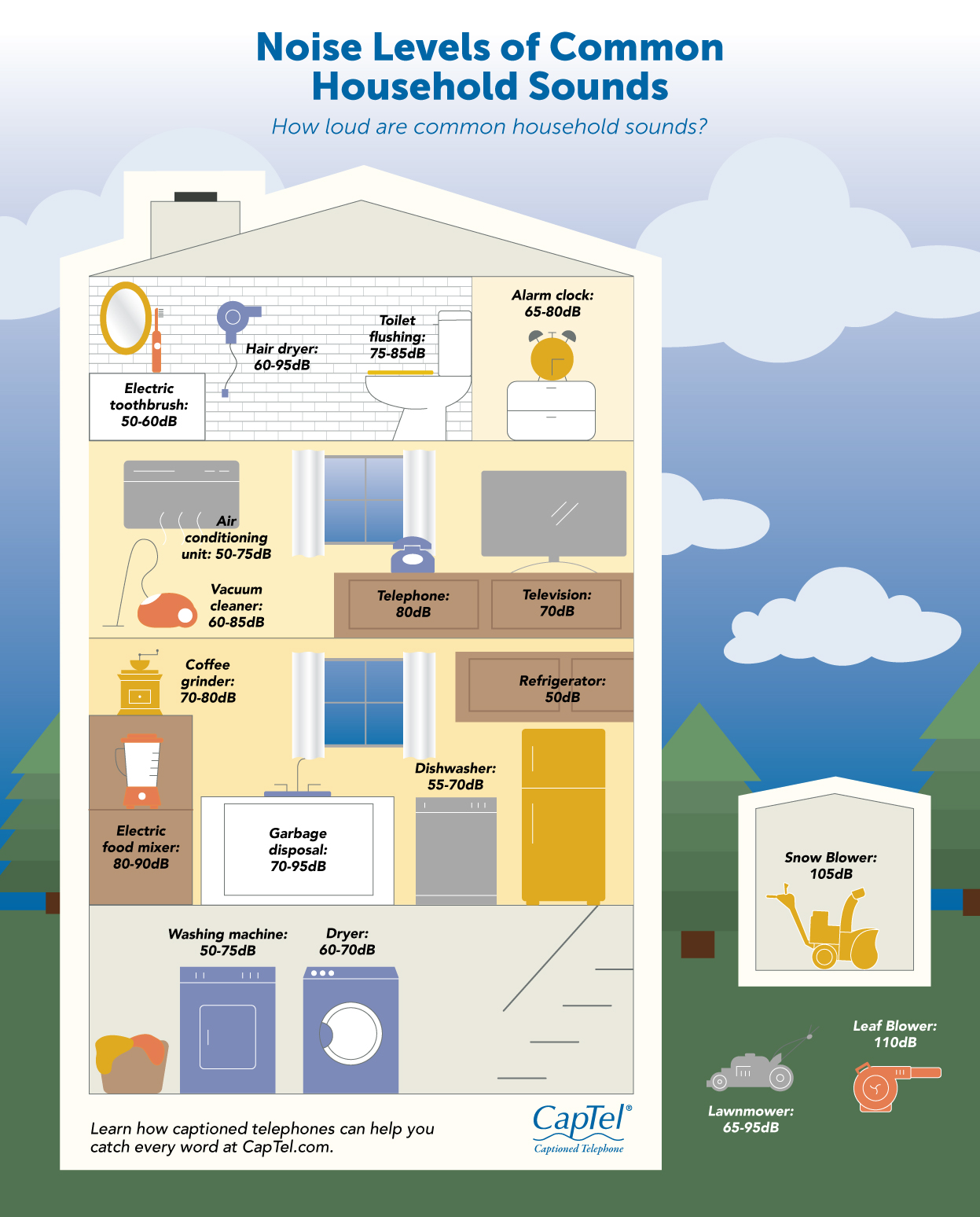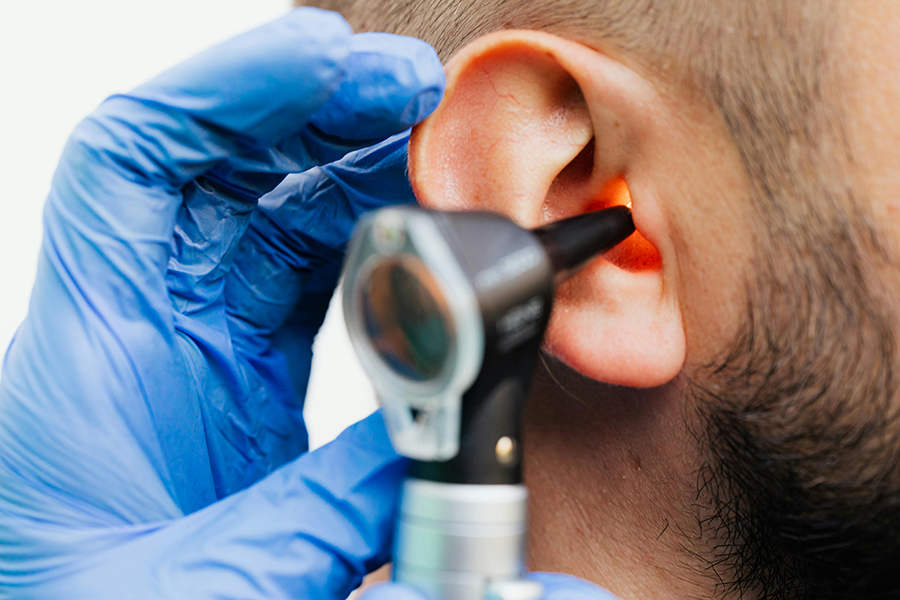Use our room-by-room illustration to learn how loud your house can get.
Exposure to loud noises over time can lead to noise-induced hearing loss (NIHL), which impacts as many as one in four American adults. In a previous blog post, we explored safe vs. dangerous decibel levels and when to avoid exposure to dangerous sounds like fireworks and concert speakers. While keeping a distance from loud noises is a sure-fire way to avoid NIHL when you’re out and about, how can you protect yourself from everyday sounds inside your house? Review this room-by-room guide to common household sounds to learn just how loud your house can get and discover a few helpful hearing loss prevention tips to use at home.
Living Room
- Television
While your TV audio fluctuates with the control of your remote, the average television reaches up to 70 decibels (dB), making it generally safe for listening. - Telephone
A ringing telephone typically reaches the upper limits of the safety recommendations at 80dB. While this is classified as generally safe, your sensitivity may vary in different environments and situations. Check with your audiologist if you have concerns.
If hearing over the phone is difficult, learn how a CapTel captioned telephone can help you catch every word.
- Vacuum cleaner
The average vacuum cleaner ranges in sound from 60-85dB and is considered safe. However, you may want to consider wearing ear plugs or earmuffs while vacuuming if you dislike the unique grinding/whooshing sound vacuums make. - Air conditioning unit
Do you enjoy keeping your home cool during the day or at night? Your A/C unit typically ranges between 50-75dB and is perfectly safe to run for extended time periods.
Kitchen
- Garbage disposal
Garbage disposals can get loud, ranging between 70-95dB. Units on the higher side of this range can reach beyond the designated “safe” zone. If that is the case, you may want to consider wearing hearing protection like ear plugs while disposing of items down the drain. - Dishwasher
If you prefer the convenience of a dishwasher rather than washing by hand, you’ll be happy to know that the standard household dishwasher produces sounds between 55-70dB. Many of today’s models feature extra quiet features that make them virtually undetectable when they’re running. - Electric food mixer or processor
These electric mixers and processors produce sounds of 80-90dB. The start of the danger zone for most people is around 85dB, so be careful when handling of these appliances. You’ll want to arm yourself with ear protection to keep your hearing safe. - Coffee grinder
Morning coffee is often a morning staple. A household coffee grinder produces sound at 70-80dB, making it a safe feature for any kitchen. - Refrigerator
The quiet “hum” of a refrigerator is a common background noise found in most kitchens. This humming falls within the safe zone at 50dB.
Bathroom
- Hair dryer
Drying your hair exposes you to sounds between 60-95dB. While the noise from some hair dryers are safe, other models may be louder due to advanced heating technology or internal mechanics. To ensure safety, consider using ear protection while drying your hair. - Electric toothbrush
Electric toothbrushes can be incredibly effective and hygienic tools for dental health. At 50-60dB, they are also safe to use in the home every day. - Toilet flushing
A flushing toilet is another common household sound that can be easy to overlook. The average toilet produces sounds at 75-85dB, placing it at the higher end of the safe decibel zone.
Bedroom
- Alarm clock
If you’re like most people, you wake to an alarm clock every morning. These small appliances range between 65-80dB, making them a generally safe – and handy – household tool.
Laundry Room
- Washing machine
Cleaning your clothes is another safe appliance for your ears. The typical washing machine produces sound at 50-75dB. - Dryer
Dryers range between 60-70dB. While the listed dB sound level is within the safety zone, some units may sound louder to your ears because of the sound frequency of the machine.
Backyard
- Lawnmower
If you are completing yard work, you’ll want to wear your ear protection. Most backyard appliances reach sound levels that exceed the recommended limit. Lawnmowers are especially noisy machine that registers between 65-95dB. - Leaf blower
The fall season corresponds to pumpkins, Halloween – and leaf blowers. These handy but dangerously loud outdoor tools reach up to 110dB. You’ll want to consider outsourcing this task to the professionals or try out one of these gadgets to protect your hearing if you’re using a leaf blower on your own. - Snow blower
Clearing snow from your sidewalk and driveway can be one of the most time-consuming winter tasks, depending on the amount of snowfall and conditions of your driveway or sidewalk. Snow blowers can make the work a bit quicker, but they are dangerously loud. At 105dB, be sure to protect your ears from both the winter cold and snow blower sounds or arrange for a company or neighbor to remove the snow for you.
This room-by-room infographic outlines just how loud your house can get. Check out this article for more practical hearing loss prevention tips.
If you or someone you love experiences hearing loss, review this guide to find out if a CapTel captioned phone for hearing loss is right for you.



